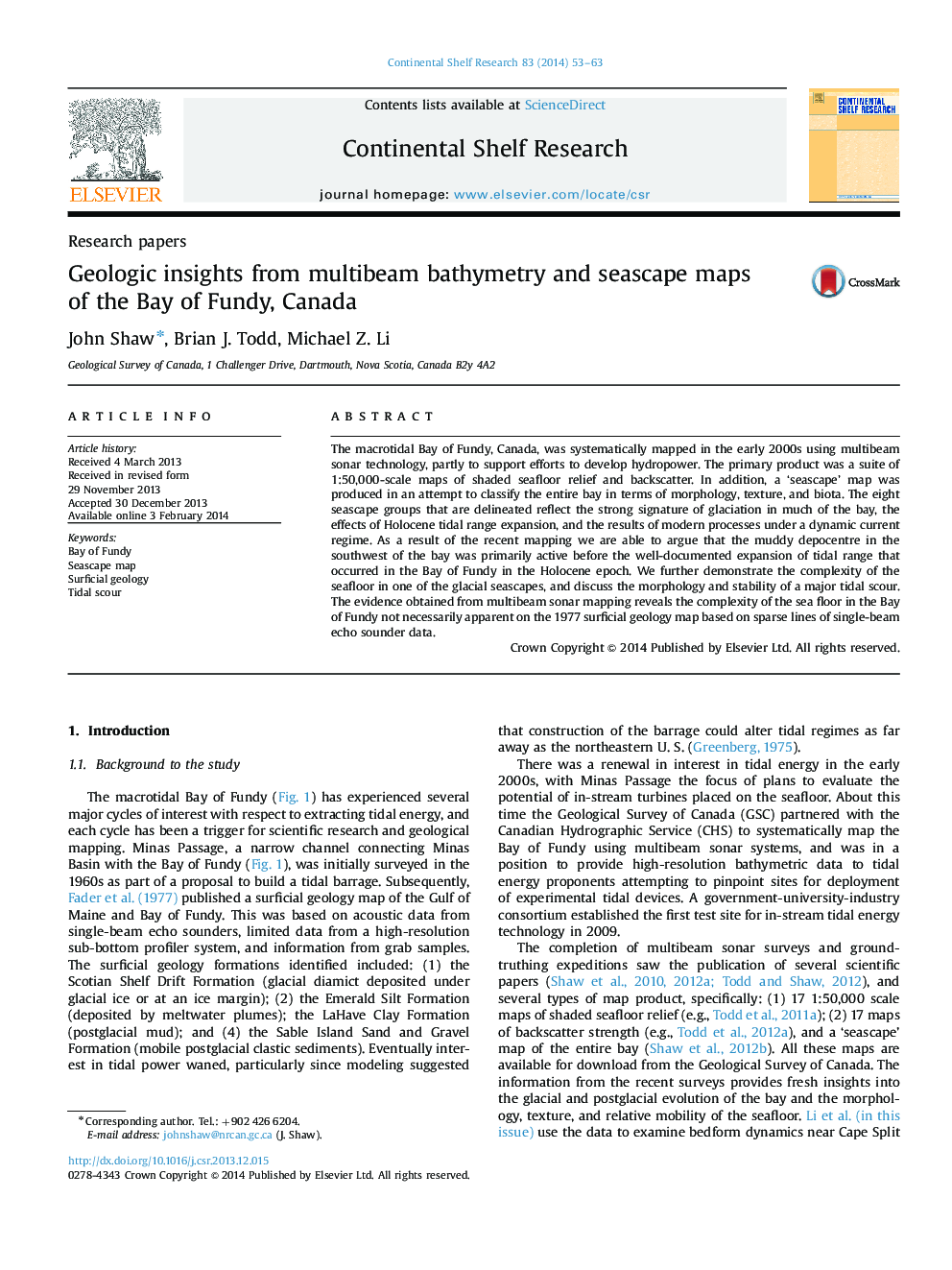| Article ID | Journal | Published Year | Pages | File Type |
|---|---|---|---|---|
| 4531833 | Continental Shelf Research | 2014 | 11 Pages |
•The macrotidal Bay of Fundy, Canada, was systematically mapped with multibeam sonar.•We describe the map products: 1:50,000 scale maps of topography and backscatter.•We also describe how the bay was also mapped in terms of ‘seascapes’.•The paper outlines three advances in understanding that result from the mapping.
The macrotidal Bay of Fundy, Canada, was systematically mapped in the early 2000s using multibeam sonar technology, partly to support efforts to develop hydropower. The primary product was a suite of 1:50,000-scale maps of shaded seafloor relief and backscatter. In addition, a ‘seascape’ map was produced in an attempt to classify the entire bay in terms of morphology, texture, and biota. The eight seascape groups that are delineated reflect the strong signature of glaciation in much of the bay, the effects of Holocene tidal range expansion, and the results of modern processes under a dynamic current regime. As a result of the recent mapping we are able to argue that the muddy depocentre in the southwest of the bay was primarily active before the well-documented expansion of tidal range that occurred in the Bay of Fundy in the Holocene epoch. We further demonstrate the complexity of the seafloor in one of the glacial seascapes, and discuss the morphology and stability of a major tidal scour. The evidence obtained from multibeam sonar mapping reveals the complexity of the sea floor in the Bay of Fundy not necessarily apparent on the 1977 surficial geology map based on sparse lines of single-beam echo sounder data.
